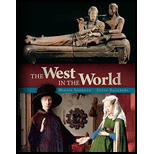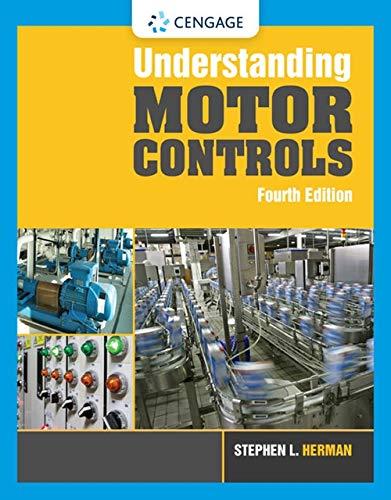
Foundations of Materials Science and Engineering
6th Edition
ISBN: 9781259696558
Author: SMITH
Publisher: MCG
expand_more
expand_more
format_list_bulleted
Concept explainers
Question
Chapter 11.13, Problem 5KCP
To determine
In packing of ions in ionic solids, what are meant by (a) coordination number and (b) critical radius ratio?
Expert Solution & Answer
Want to see the full answer?
Check out a sample textbook solution
Students have asked these similar questions
Sodium chloride (NaCI) is a ceramic that
has the following crystal structure.
Given:
R(Na*)= 0.098 nm and R(CI")=0.181
Calculate the lonic Packing Factor (IPF)
of NaCl?
O Nat
Select one:
O a. 0.14
O b. 0.66
c. 0.51
O d. 0.74
O e. 0.41
O f. 0.47
O g. 0.21
Sodium chloride (NaCI) is a ceramic that
has the following crystal structure.
Given:
R(Na*)= 0.098 nm and R(CI")=0.181
Calculate the lonic Packing Factor (IPF)
of NaCl?
O Na
CH
Select one:
O a. 0.14
O b. 0.66
C. 0.51
O d. 0.74
O e. 0.41
O f. 0.47
g. 0.21
The free space in a metal may be found by subtracting the volume of the atoms in a unit cell from the volume of the cell. Calculate the percentage of free space in each of the three cubic lattices if all atoms in each are of equalsize and touch their nearest neighbors. Which of these structures represents the most efficient packing? That is, which packs with the least amount of unused space?
Chapter 11 Solutions
Foundations of Materials Science and Engineering
Ch. 11.13 - Define a ceramic material.Ch. 11.13 - Prob. 2KCPCh. 11.13 - Prob. 3KCPCh. 11.13 - Prob. 4KCPCh. 11.13 - Prob. 5KCPCh. 11.13 - Prob. 6KCPCh. 11.13 - Prob. 7KCPCh. 11.13 - What fraction of the octahedral interstitial sites...Ch. 11.13 - Prob. 9KCPCh. 11.13 - Describe the perovskite structure. What fraction...
Ch. 11.13 - Prob. 11KCPCh. 11.13 - Prob. 12KCPCh. 11.13 - Prob. 13KCPCh. 11.13 - Prob. 14KCPCh. 11.13 - Describe the feldspar network structure.Ch. 11.13 - Prob. 16KCPCh. 11.13 - Prob. 17KCPCh. 11.13 - Describe two methods for preparing ceramic raw...Ch. 11.13 - Prob. 19KCPCh. 11.13 - Prob. 20KCPCh. 11.13 - Prob. 21KCPCh. 11.13 - Prob. 22KCPCh. 11.13 - Prob. 23KCPCh. 11.13 - Prob. 24KCPCh. 11.13 - Prob. 25KCPCh. 11.13 - Prob. 26KCPCh. 11.13 - What are the purposes of drying ceramic products...Ch. 11.13 - Prob. 28KCPCh. 11.13 - What is the vitrification process? In what type of...Ch. 11.13 - Prob. 30KCPCh. 11.13 - Prob. 31KCPCh. 11.13 - Prob. 32KCPCh. 11.13 - Prob. 33KCPCh. 11.13 - Prob. 34KCPCh. 11.13 - Prob. 35KCPCh. 11.13 - Prob. 36KCPCh. 11.13 - Prob. 37KCPCh. 11.13 - Prob. 38KCPCh. 11.13 - Why do most ceramic materials have low thermal...Ch. 11.13 - Prob. 40KCPCh. 11.13 - Prob. 41KCPCh. 11.13 - Prob. 42KCPCh. 11.13 - Prob. 43KCPCh. 11.13 - Prob. 44KCPCh. 11.13 - Prob. 45KCPCh. 11.13 - Prob. 46KCPCh. 11.13 - How is a glass distinguished from other ceramic...Ch. 11.13 - Prob. 48KCPCh. 11.13 - Prob. 49KCPCh. 11.13 - Prob. 50KCPCh. 11.13 - Prob. 51KCPCh. 11.13 - Prob. 52KCPCh. 11.13 - Prob. 53KCPCh. 11.13 - Prob. 54KCPCh. 11.13 - Prob. 55KCPCh. 11.13 - Prob. 56KCPCh. 11.13 - Prob. 57KCPCh. 11.13 - Prob. 58KCPCh. 11.13 - Prob. 59KCPCh. 11.13 - Prob. 60KCPCh. 11.13 - Prob. 61KCPCh. 11.13 - Prob. 62KCPCh. 11.13 - Prob. 63AAPCh. 11.13 - Prob. 64AAPCh. 11.13 - Prob. 65AAPCh. 11.13 - Prob. 66AAPCh. 11.13 - Prob. 67AAPCh. 11.13 - Prob. 70AAPCh. 11.13 - Calculate the ionic packing factor for (a) MnO and...Ch. 11.13 - Prob. 72AAPCh. 11.13 - Prob. 73AAPCh. 11.13 - Prob. 74AAPCh. 11.13 - Prob. 75AAPCh. 11.13 - Prob. 77AAPCh. 11.13 - Prob. 78AAPCh. 11.13 - Prob. 79AAPCh. 11.13 - Prob. 80AAPCh. 11.13 - Prob. 81AAPCh. 11.13 - Why are triaxial porcelains not satisfactory for...Ch. 11.13 - Prob. 83AAPCh. 11.13 - Prob. 84AAPCh. 11.13 - Prob. 85AAPCh. 11.13 - What causes the lack of plasticity in crystalline...Ch. 11.13 - Prob. 87AAPCh. 11.13 - Prob. 88AAPCh. 11.13 - Prob. 89AAPCh. 11.13 - A reaction-bonded silicon nitride ceramic has a...Ch. 11.13 - Prob. 91AAPCh. 11.13 - Prob. 92AAPCh. 11.13 - Prob. 93AAPCh. 11.13 - Prob. 94AAPCh. 11.13 - How does the silica network of a simple silica...Ch. 11.13 - Prob. 96AAPCh. 11.13 - Prob. 97AAPCh. 11.13 - Prob. 98AAPCh. 11.13 - Prob. 99AAPCh. 11.13 - Prob. 100AAPCh. 11.13 - Prob. 101AAPCh. 11.13 - Prob. 102AAPCh. 11.13 - Prob. 103AAPCh. 11.13 - Prob. 104AAPCh. 11.13 - Prob. 105AAPCh. 11.13 - Prob. 106AAPCh. 11.13 - Prob. 107AAPCh. 11.13 - Prob. 108SEPCh. 11.13 - Prob. 109SEPCh. 11.13 - Prob. 110SEPCh. 11.13 - Prob. 111SEPCh. 11.13 - Prob. 112SEPCh. 11.13 - Alumina (A12O3) and chromium oxide (Cr2O3) are...Ch. 11.13 - (a) How are the ceramic tiles used in the thermal...Ch. 11.13 - The nose cap and the wing leading edges of the...Ch. 11.13 - Prob. 116SEPCh. 11.13 - Prob. 117SEPCh. 11.13 - Prob. 118SEPCh. 11.13 - Prob. 119SEPCh. 11.13 - Prob. 120SEPCh. 11.13 - Prob. 121SEPCh. 11.13 - Prob. 122SEPCh. 11.13 - Prob. 123SEPCh. 11.13 - Prob. 124SEPCh. 11.13 - Prob. 125SEPCh. 11.13 - Prob. 126SEPCh. 11.13 - Prob. 127SEPCh. 11.13 - Prob. 128SEPCh. 11.13 - Prob. 129SEP
Knowledge Booster
Learn more about
Need a deep-dive on the concept behind this application? Look no further. Learn more about this topic, mechanical-engineering and related others by exploring similar questions and additional content below.Similar questions
- Show that the atomic packing factor for BCC is 0.68.arrow_forwardMetallic Crystal Structures1. For the HCP crystal structure, show that the ideal c/a ratio is 1.633. 2. Show that the atomic packing factor for HCP is 0.74.arrow_forwardFactors influence crystal structure for ionic materials What factors influence crystal structure for covalently bonded materialsarrow_forward
- Solve the following Problem * Iodine has an orthorhombic unit cell for which the a, b, and c lattice parameters are 0.479, 0.725, and 0.978 nm, respectively. (a) If the atomic packing factor and atomic radius are 0.547 and 0.177 nm, respectively, de- termine the number of atoms in each unit cell. (b) The atomic weight of iodine is 126.91 g/mol; compute its theoretical density.arrow_forwardCalculate the residual molar entropy for molecular crystals of 1,3,5-Trichlorobenzenearrow_forwardQ : (i) Prove that the atomic packing factor (APF) for the BCC crystal structure is 0.68. (ii) Prove that the volume of an FCC unit cell, VC is; VC = 16R3/2arrow_forward
- The density of BCC iron is 7.882g/cm3 and the lattice parameter is 0.2866nm when hydrogen atoms are introduced at interstitial positions. Calculate(a) the atomic fraction of hydrogen atoms; and(b) number of unit cells on average that contain hydrogen atoms.arrow_forwardThe only alkali metal halides that do not adopt the NaCl structure are CsCl, CsBr, and CsI, formed from the largest alkali metal cation and the three largest halide ions. These crystallize in the cesium chloride structure (shown here for CsCl). This structure has been used as an example of how dispersion forces can dominate in the presence of ionic forces. Use the ideas of coordination number and polarizability to explain why the CsCl structure exists.arrow_forwardIllustrate the difference between crystalline structure and amorphous structure using an examplearrow_forward
- Sketch and explain, the number of atoms, coordination number and void space of a body centered cubic structurearrow_forward1. Show that the atomic packing factor for HCP is 0.74.2. Calculate the radius of Palladium atom given that PD has an FCC crystal structure, a density of 12.0 g/cm3, and an atomic weight of 106.4 g/mol.arrow_forwardThe fraction of lattice points occupied by vacancies in solid magnesium at 660°C is 10. Compute the activation energy required to create vacancies in magnesium. What are the functien of activation energy in this process. Use Boltzmann constant 1.38 X1023 J/atom-K. 4.arrow_forward
arrow_back_ios
SEE MORE QUESTIONS
arrow_forward_ios
Recommended textbooks for you
 Understanding Motor ControlsMechanical EngineeringISBN:9781337798686Author:Stephen L. HermanPublisher:Delmar Cengage Learning
Understanding Motor ControlsMechanical EngineeringISBN:9781337798686Author:Stephen L. HermanPublisher:Delmar Cengage Learning

Understanding Motor Controls
Mechanical Engineering
ISBN:9781337798686
Author:Stephen L. Herman
Publisher:Delmar Cengage Learning